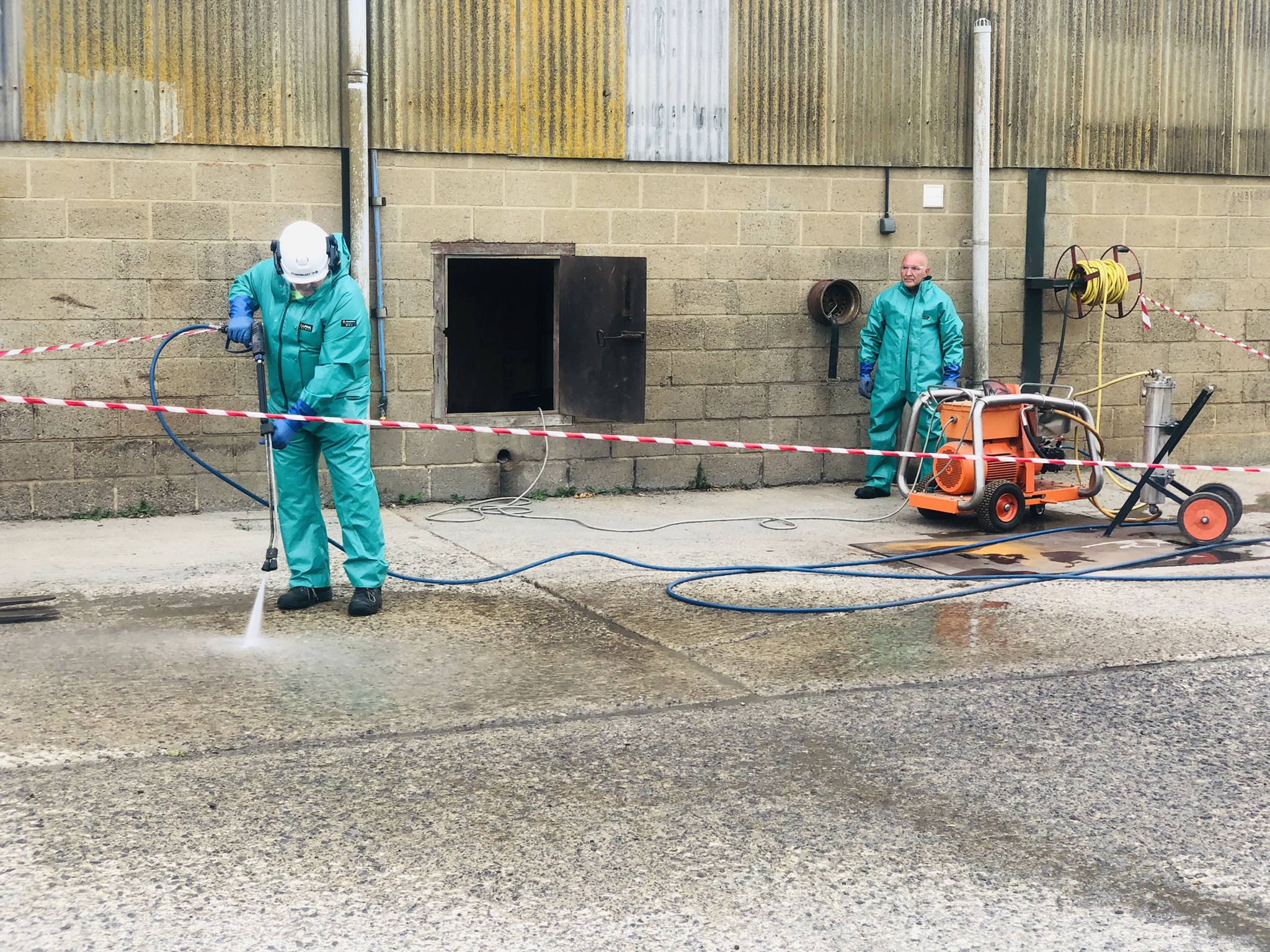Pressure Washing Course
Contact usHydroblast is now offering the Water Jetting Association (WJA) Approved one day stand-alone pressure washing course.
Who is the course for?
This course is specifically designed for those who are involved with smaller, lower power machines used for such things as vehicle washing, small plant cleaning or just general clean up jobs. If you have a machine that is electric, diesel, petrol or PTO driven and does not exceed 3000 psi @ 5gpm then this is the course for you!
Are there any prerequisites?
Unlike our other Water Jetting Courses this course does not require a Safety Awareness Card prior to attending.


What is involved?*
This one-day course provides the student with the latest WJA Code of Practice for them to use during the day and to take away with them at the end of the course. The first part of the course is theory which covers safety, injuries, Personal Protective Equipment (PPE) and legislation. In the second part of the day there is a practical session.
At the end of the day there will be a question paper with 20 questions with a pass mark of 75%.
Once the course has been successfully completed participants will be issued with a photocard which are valid for three years along with granted access to the WJA App and are issued by the Water Jetting Association (WJA). The Photocard are recognised by the Health and Safety Executive (HSE) and are City and Guild Accredited (C&G). These are valid for three years and the course must be repeated before the Photocard can be renewed.
The Pressure Washing Photocard is issued by the WJA on successful completion of the course. In place of a physical certificate, successful candidates are now granted access to the WJA App — a significant step into the digital age for the Water Jetting Association. The app provides digital access to certification and also allows users to view a digital version of their photo ID card. This reduces the need for paper printouts and supports the WJA’s commitment to a more sustainable and efficient approach to record-keeping.
Registration and Introduction
Applications and Machines
Effect of varying pressure/flow at the nozzle – range of jetting machines – configurations and categories (pressure washers)
Legislation and the WJA Code of Practice
Health & Safety at Work Act – WJA Codes of Practice – status, use and recognition by the HSE Management Regulations – Risk Assessment – PPE at Work Regulations – COSHH – Employer/Employee responsibilities – Enforcement Powers – other relevant legislation e.g. Environmental Protection Act / control of Pollution Act. Confined Spaces entry Requirements.
Nozzles
Jet principles – purpose of nozzles – power of water jet – jet pressure/flow characteristic – jet reaction force. Types of nozzle – forward facing, fixed and spinning jets, multi-jet fixed and spinning nozzles.
Pumps
Pump configuration – standard piston/plunger pump, positive displacement action, operating features, effects of blockages, variation of plunger sizes. Other pump configurations – diaphragm and intensifier types. Drive arrangements – engine/electric motor, hazardous area equipment. Water supply/delivery features – filtration equipment, boost feed pumps, pulsation dampers, jump-jet. Pressure safety relief options – relief valve/bursting disc. Pressure gauge features.
Pressure Controls
Dump and dry shut controls – fail-safe/selector versions, direct manual operation/remote operation via electric-pneumatic-hydraulic controls, automatic unloader valve for dry shut, pressure regulators and automatic off-load engine speed control systems.
Water Jetting Hose
Hose construction and pressure ratings, external & internal damage possibilities, hazards arising from damaged hoses, inspection requirements. Hose end fittings, construction/assembly/testing. Connectors and hose end couplings – types and features. Bore size and flow ratings. Hose for general/high flow/small bore tube and pipe cleaning. Pressure drop due to flow through hose and lances – effect on pressure available at the nozzle.
Hazards
Hazards arising directly from the water jet – from operational regime – from site environment.
Injuries
Effects of impact by high pressure water jet – nature of internal injuries caused – action in event of a jetting injury – awareness of possible absence of visual injury and use of WJA Medical Card.
Personal Protective Equipment (PPE)
General principles regarding use of PPE, as a last resort; Main body protection – limits on effectiveness against direct impact of water jet. Protection of head, hands, feet, hearing, respiration.
Operational Procedures
Routine care and inspection – site preparations – preparations for operation – team operation. Safety points during operations – use of manual jetting gun, tube/pipe/drain cleaning nozzle/hose combinations and techniques. Safe use of non-standard equipment e.g. tee nozzle. Site shutdown and anti freeze procedures. Use of DO/DO NOT GUIDE.
Summary
Review of course content as above – with opportunity for any further discussion before Questionnaire.
Get in Touch…
Contact us today to learn more about our Water Jetting Training Services. You can also book our open courses online, simply select your preferred date on our calendar.
